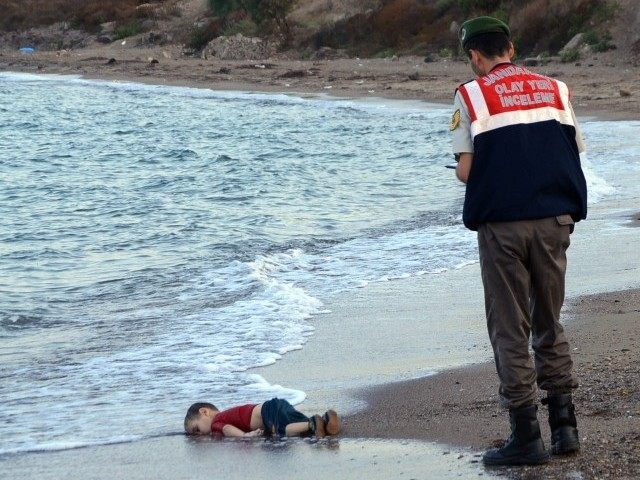Research into the public narrative surrounding the European migrant crisis has shown definitively that the viral spread of the photo of Aylan Kurdi, the toddler who drowned making the crossing from Turkey to Greece, was a watershed moment, shifting the language used the migration debate firmly in favour of the ‘refugees’ trope.
It was the photo that set alight action on the so called ‘refugee crisis’: little Aylan washed up in the surf on a Turkish beach, the latest tragic victim of cruel Europe’s reluctance to grant safe passage and sanctuary to those fleeing the Syrian war, or so the story went.
Before the picture emerged, the public, judging by Twitter posts were fairly evenly split on whether the hundreds of thousands of people making the crossing were refugees or mere migrants. But after his photo went viral, the narrative shifted dramatically in favour of “refugees”.
The extent of this phenomenon has been revealed by two studies, PA has reported.
Google’s News Lab data journalism team in California has analysed millions of searches relating to Aylan Kurdi around the time of his death, to investigate which terms the world was searching, and what they were looking for.
Dr Claire Wardle, research director at the Tow Centre for Digital Journalism at Columbia University and a co-author of the report, commented: “2015 was the year the Syrian refugee crisis hit the European consciousness, but it’s easy to forget that this was not the case before the Aylan Kurdi image.
“In April, over 700 refugees and migrants lost their lives when their boat capsized off Lampedusa. After one day of coverage, the story disappeared, despite the tragic loss of life.
“The photo of Aylan Kurdi galvanised the public in a way that hours of broadcasts and thousands of column inches wasn’t able to do. It has created a frame through which subsequent coverage has been positioned and compared.”
This finding supports similar work by researchers at Sheffield University. In conjunction with their private sector partner Pulsar, they analysed nearly three million tweets posted after the picture went viral. They found a dramatic shift in the language used to describe those travelling into Europe.
Francesco D’Orazio, vice-president of product and research at Pulsar, explained: “For most of 2015, the use of the words migrants and refugees was head to head in public conversation, accounting for pretty much the same volume over nine months – 5.2 million tweets versus 5.3 million tweets.
“From September 2 onward this radically flipped. The numbers swing dramatically towards a clear focus on refugees – 2.9 million tweets and 6.5 million tweets.”
Dr D’Orazio added: “Twitter’s ability to act as a catalyst has connected emerging stories and relevant people, helping to develop and connect those audiences on a global scale and make a story go mainstream before the international press has even started to officially cover it.
“But we shouldn’t forget that it was the journalists on the ground that broke the story on Twitter and through the social platform put it in front of the right audience.”
The implication is that certain sections of the media may have used Twitter’s capacity to make images go viral in order to shift the narrative, a possibility that Breitbart raised in the wake of the photo going global.
Highlighting the fact that the photo appears to have been staged managed to maximise its reach, James Delingpole asked: “over the last five or ten years, hundreds of dead children will have been washed up on the shores of the Mediterranean from Lesbos to Lampedusa – all largely ignored by the media.
“What I think we’d all like to know is: why this boy, why now? What was it that prompted the world’s editors to make this particular photograph their big story? Who started it? And what – given that they must have been aware of the effects it would have, over and above selling more newspapers – was their motivation?”
The Aylan Kurdi photo is not the only example of the emotive use of children in the media to shape the narrative. In September, the same month as Aylan’s photo became emblematic of the migrant issue, Breitbart London’s Raheem Kassam analysed the BBC’s use of pictures to illustrate the hundreds of thousands of people entering Europe. He found that they overwhelmingly portrayed children, giving a highly skewed impression of the demographic makeup of the arrivals.
Of the approximately 200 top images associated with the story on the BBC’s news site, 53 per cent portrayed children, while 36 portrayed men. But the UN’s figures tell a very different story: just 15 per cent of the new arrivals were actually children, while 72 per cent were men.

COMMENTS
Please let us know if you're having issues with commenting.